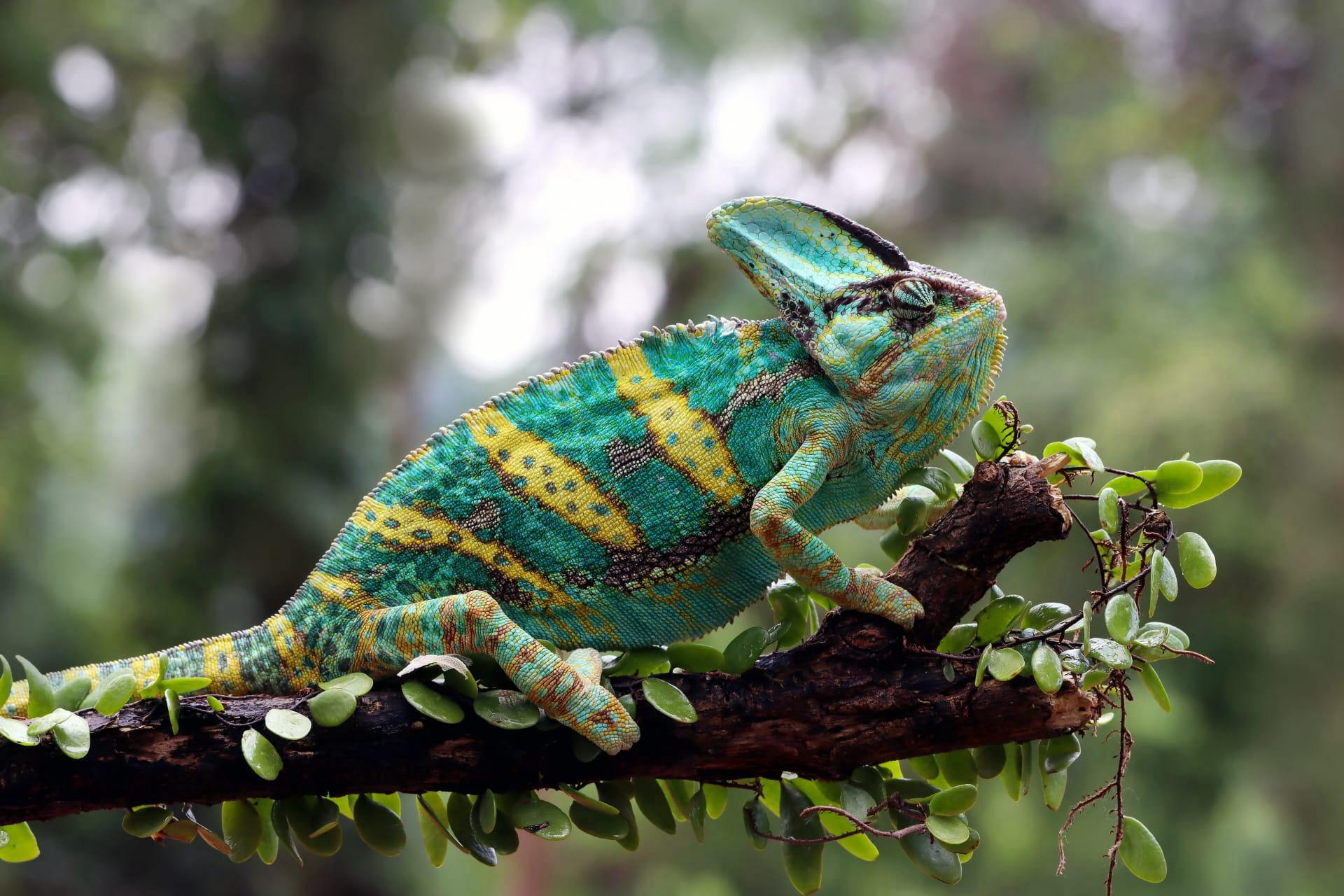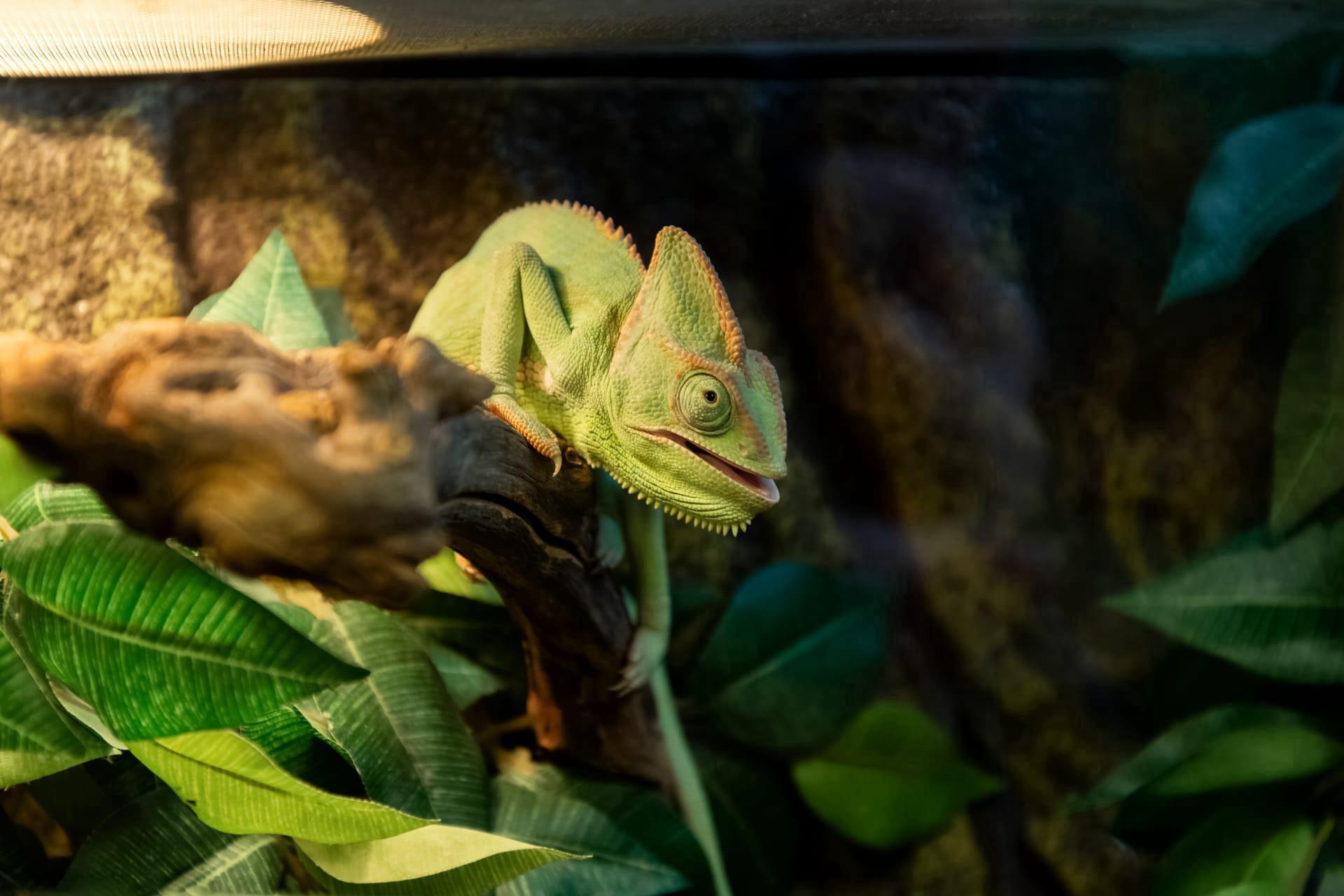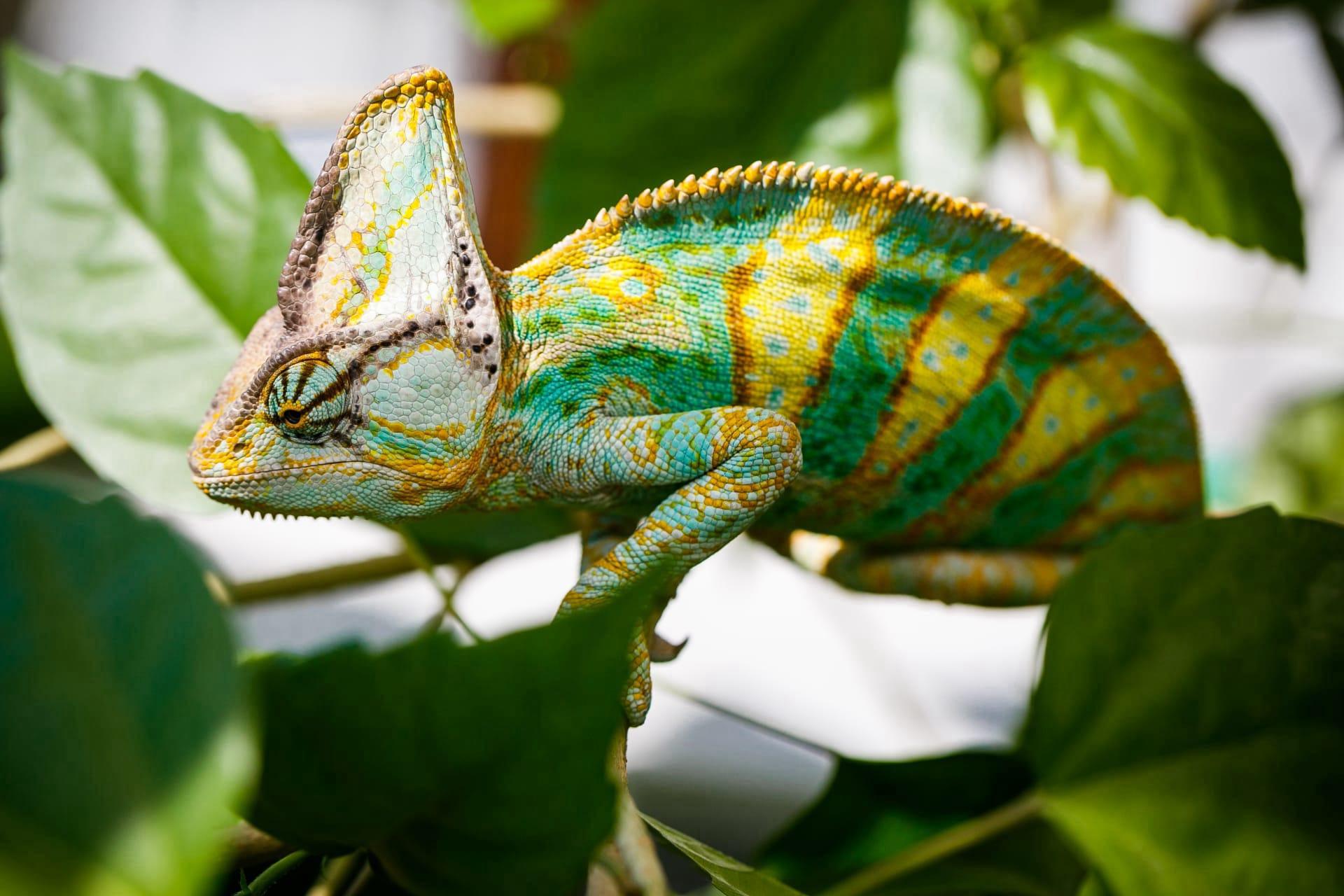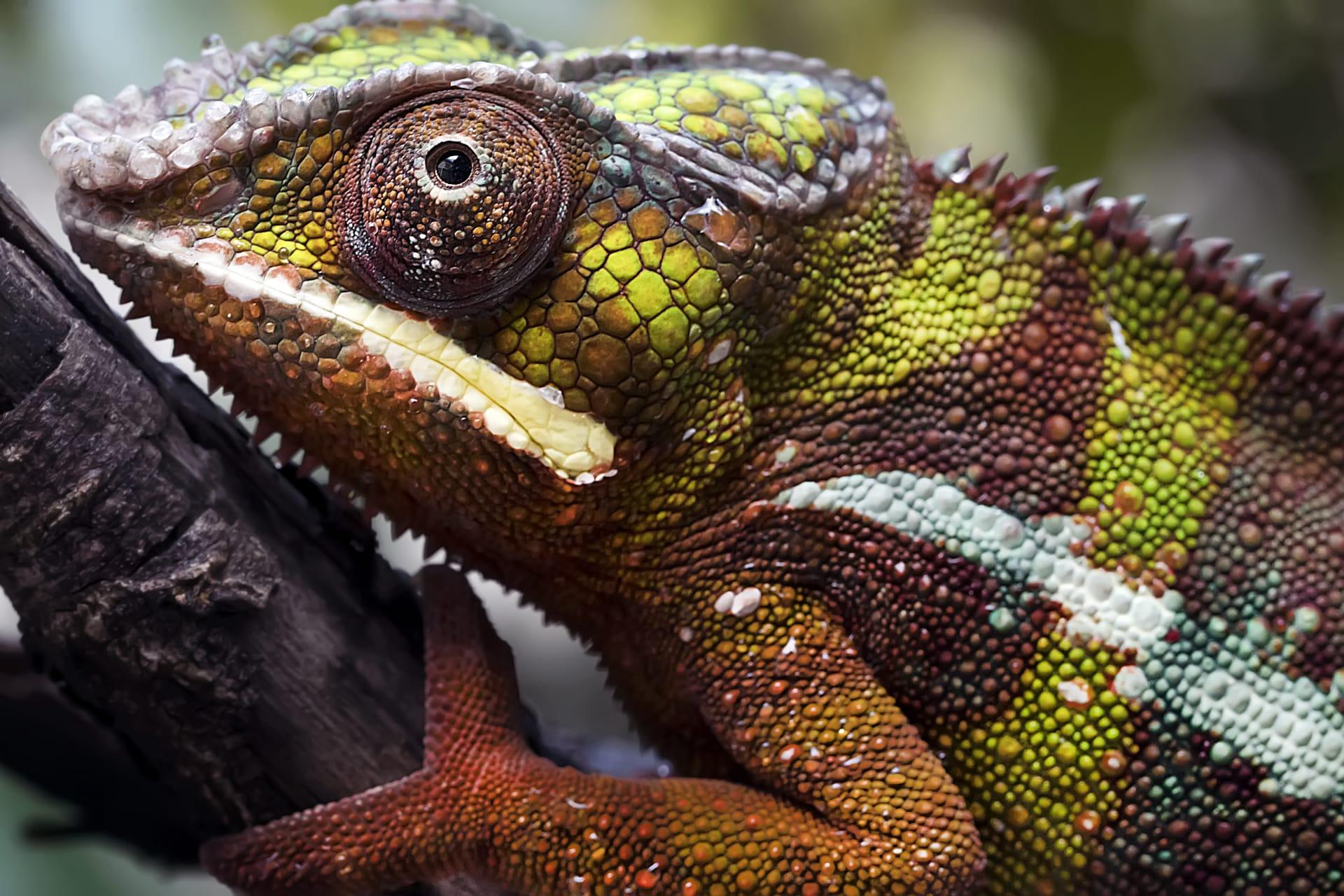Panther Chameleon Characteristics
- Home /
- Mini Encyclopedia /
- Animal /
- Panther Chameleon Characteristics
1
The Panther Chameleon, a vibrant and unique reptile, boasts an impressive physique. Adult males typically stretch about 20 inches long, while females are slightly smaller. They're known for a lifespan that can reach up to 8 years in captivity, a testament to their resilience. These creatures showcase a striking array of colors, from greens and blues to more intense reds and yellows, varying across individuals and subspecies. The skin of Panther Chameleons not only contributes to their mesmerizing appearance but also plays a crucial role in their survival, changing hues in response to mood, temperature, and light.
Among their most remarkable organs are their eyes. Panther Chameleons possess astonishingly adaptable eyes that can rotate independently, allowing them to have a 360-degree view of their surroundings - a vital adaptation for spotting prey and predators. Each eye can focus separately, enabling them to observe two different objects simultaneously. This visual prowess is complemented by their specialized tongue, which can be projected at incredible speeds to catch prey. The tongue can extend up to twice the chameleon's body length and is used with remarkable accuracy, making it a key tool in their hunting repertoire.

2
Question: Why do Panther Chameleons change colors?
Answer: Contrary to popular belief, the primary reason Panther Chameleons change colors isn't just for camouflage. Instead, these color changes communicate emotions, intentions, and responses to temperature and light. For example, darker colors might be adopted to absorb more heat when temperatures are low, while lighter colors are used to reflect sunlight on hotter days. The color variations also play a role in social signaling, particularly during mating seasons and territorial displays. Males often exhibit brighter colors to attract females or intimidate rivals. This ability to shift hues is due to specialized cells in their skin called chromatophores, which expand or contract to alter the chameleon's coloration.

3
The Panther Chameleon exhibits a distinct gait, moving in a deliberate, rocking motion. This movement, often likened to a leaf swaying in the wind, aids in blending in with their surroundings, making them less noticeable to predators and prey. Their feet are zygodactylous, meaning they have two toes pointing forward and two backward, perfect for gripping branches as they navigate their arboreal habitat.
In terms of hunting, Panther Chameleons are ambush predators. They rely on their excellent eyesight to spot insects from a distance. Once a target is in sight, they approach slowly, maintaining stealth. Then, in a burst of speed, their sticky, elastic tongue shoots out, capturing the prey with precision. This hunting method is highly effective, allowing them to feed on a variety of insects, including crickets, grasshoppers, and even smaller lizards.

4
Panther Chameleons are native to the tropical forests of Madagascar. They thrive in warm, humid environments, with ample vegetation providing both food and shelter. This habitat allows them to regulate their body temperature and stay hidden from predators. Their presence indicates a healthy ecosystem, as they require a balance of sunlight, foliage, and prey to survive.
When it comes to reproduction, female Panther Chameleons lay clutches of eggs, typically ranging from 10 to 40 eggs, which they bury in soft, moist soil. The eggs incubate for about 7 to 9 months before hatching. Interestingly, the temperature during incubation can determine the sex of the offspring. Higher temperatures tend to produce more males, while lower temperatures result in more females. This reproductive strategy is crucial for their survival in the wild, ensuring a balanced population distribution.

5
Book: "Chameleons: Nature's Hidden Jewels" by Petr Necas. This comprehensive guide, published in the United States in the early 2000s, delves into the fascinating world of chameleons. Necas, a renowned herpetologist, provides detailed insights into various species, including the Panther Chameleon. The book covers aspects ranging from their biology and behavior to care in captivity, making it a valuable resource for both enthusiasts and professionals.
Book: "The Chameleon Handbook" by Francois Le Berre. Originating from France and published in the late 1990s, this book offers an extensive overview of chameleon species, including the Panther Chameleon. Le Berre, an expert in herpetology, explores the intriguing characteristics and care requirements of these reptiles. The book is praised for its detailed information and practical advice, catering to a broad audience interested in these remarkable creatures.